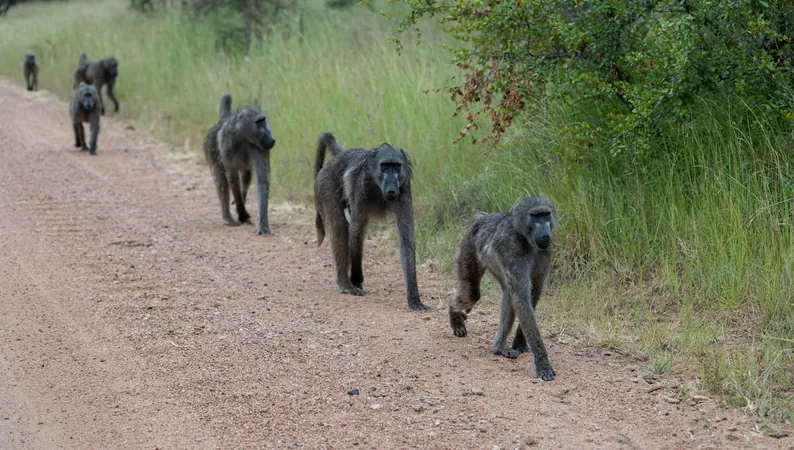
The Surprising Science Behind Baboons' Straight-Line Travels
2025-06-13
Author: Ying
Why Do Baboons Travel in Straight Lines?
In the wilds of Cape Peninsula, South Africa, chacma baboons (Papio ursinus) are leaving researchers puzzled with their intriguing behavior of moving in straight, single-file lines known as progressions. While many have speculated about the reasons behind this pattern, solid answers have remained elusive—until now.
The Mystery Unraveled: Social Bonds at Play
A dedicated research team observed 78 of these progressions over 36 days and identified four main theories on why baboons might prefer straight lines. Initially thought to be a strategy for keeping younger or weaker members safe, the reality goes deeper. Instead of merely following a leader or scrambling for resources, it appears that these lines are profoundly influenced by social hierarchies and friendships.
Dr. Andrew King from Swansea University explains, "It’s not merely about avoiding danger or accessing food—it's primarily driven by their social connections. They prefer to move alongside their friends, resulting in a consistent order when they travel." This revelation flips the script on our understanding of group dynamics in these primates.
Patterns of Movement: When and How Baboons Travel
Interestingly, these travel patterns often take place in the late afternoon or early evening as the troop heads back to their sleeping sites. Contrary to expectations, the dominant baboons are frequently found in the middle of the procession, not at the front as one might assume. The research suggests these higher-ranking individuals may have established deeper social ties that keep them closer together.
King further clarifies, "In this specific baboon group, socially connected higher-ranking members typically walk in the middle, while lower-ranking ones find themselves at the front or back. During familiar movements—like returning to a known sleeping area—the frontmost baboons aren’t necessarily leaders; they’re simply out ahead, familiar with the route."
Friendship Over Hierarchy: A Unique Social Structure
The study revealed a pattern: baboons with stronger social connections tended to walk in the middle of the line, exhibiting the influence of their relationships. Lower-ranked baboons, having fewer close ties, often end up trailing or leading the pack.
Ultimately, it's clear that for these intelligent creatures, companionship is key. Baboon progressions are not merely mundane movements; they reflect a complex social tapestry, underscoring the depth of their relationships. After all, who wouldn’t want to stroll alongside friends?




 Brasil (PT)
Brasil (PT)
 Canada (EN)
Canada (EN)
 Chile (ES)
Chile (ES)
 Česko (CS)
Česko (CS)
 대한민국 (KO)
대한민국 (KO)
 España (ES)
España (ES)
 France (FR)
France (FR)
 Hong Kong (EN)
Hong Kong (EN)
 Italia (IT)
Italia (IT)
 日本 (JA)
日本 (JA)
 Magyarország (HU)
Magyarország (HU)
 Norge (NO)
Norge (NO)
 Polska (PL)
Polska (PL)
 Schweiz (DE)
Schweiz (DE)
 Singapore (EN)
Singapore (EN)
 Sverige (SV)
Sverige (SV)
 Suomi (FI)
Suomi (FI)
 Türkiye (TR)
Türkiye (TR)
 الإمارات العربية المتحدة (AR)
الإمارات العربية المتحدة (AR)